Let's talk about Italian coffee.
Italian coffee Espresso is the essence of Italian coffee, his practice originated in Italy, which means "very fast" in Italian, which is characterized by the use of steam pressure to extract the coffee liquid in an instant. All Milk Coffee or Fancy Coffee is based on Espresso. So Espresso is the key to testing the quality of a cup of coffee.
Introduction editor
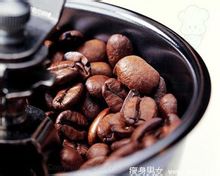
Italian coffee: Italian coffee is usually brewed at home using a mocha pot invented in Italy, which also uses the principle of vapor pressure to quench coffee (another Watt's apprentice). The mocha pot can make the pressurized vapor pass directly through the coffee powder, allowing the steam to pass through the cell wall of the coffee powder (or Hook's apprentice), quenching out the inner essence of the coffee, so the brewed coffee has a strong aroma and strong bitter taste, and a thin layer of coffee oil appears on the surface of the coffee, which is the source of the attractive aroma of Italian coffee.
The word "Espresso" comes from the Italian word "fast" because Italian coffee is made and delivered to consumers very quickly. Italian coffee drips slowly from the filter like warm honey, dark reddish brown, with a cream content of 10% to 30%. The brewing of Italian coffee can be defined by four M's: Macinazione represents a correct grinding method for mixing coffee; Miscela is a coffee mixture; Macchina is the machine for making Italian coffee; and Mano represents the skilled technique of the coffee maker. Only when each of the four M elements is accurately mastered, the brewed Italian coffee is the best. Among the many ways to make coffee, perhaps only Italian coffee can express the highest requirements of real coffee lovers. This production system is a small miracle in chemistry and physics, which allows coffee to retain its original taste and concentration to the maximum extent. Brewing coffee in this way can not only release soluble substances in coffee aroma, but also decompose other insoluble substances, which can enhance the quality and aroma of coffee.
When drinking Italian coffee, we will be quickly impressed by its strong taste and aroma with only one sip, which is the difference between Italian coffee and other coffee. Aroma and concentration are two measures of whether Italian coffee tastes good or not.
Category editing
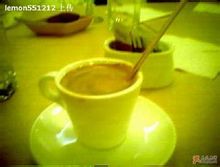
Italian coffee "Espresso" means "express" or "fast" in Italian. Italian coffee is known as the root of good coffee. Although italy owes its reputation to italy, the first italian coffee machine was invented by the french simply, but it was the italians who succeeded, as we know it today. In Italy, the price of a cup of Italian coffee is controlled by the government. For Italians who want a taste of extra bitter, strong coffee, they enjoy it as a "demitasse"(half cup), which consists of 1.5 ounces of extra black coffee with some excellent cream floating on top of it.
Cappuccino coffee (Cappuccino) is a kind of Italian coffee mixed with equal amount of Italian coffee and steam foam milk. The color of this coffee is like the dark brown hood of Cappuccino Church Friar, hence the name of Cappuccino coffee. A traditional cappuccino is one-third espresso, one-third steam milk and one-third frothy milk.
Macchiato is espresso coffee with two tablespoons of frothing steam milk. Americano Espresso coffee with heated water, similar in texture to regular brewed coffee. In this way, you can slowly taste plain espresso without milk.
Latte Italian coffee with steamed milk and a glob of frothy milk floating on top. The ratio of coffee, milk and foam is 1:2:1. (stronger than cappuccino milk).
Italian coffee laced with spirits, such as grappa. Romano is Italian coffee with a curly lemon peel.
Ristretto Double espresso.
4 Differences Edit Italian espresso
Espresso originated in Italy and means "very fast" in Italian, characterized by the use of vapor pressure to extract coffee liquid instantaneously.
Italian coffee Latte
Pour the milk into a preheated cup, then pour the hot cow into the cup; the milk must be more than 1/2 of the cup capacity; finally, scoop the milk foam onto the liquid; add a little chocolate powder or cinnamon powder.
Italian coffee Cappuccino
A cup of real espresso is made up of one-third coffee (one espresso), one-third hot milk and one-third milk foam (the liquid in the cup is half espresso and half hot milk).
Italian coffee is famous in the world. When traveling to Italy, you must have the opportunity to taste Italian coffee. Good coffee in Italy is a national must
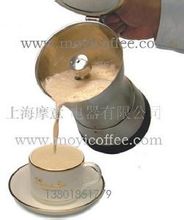
Italian coffee is not expensive. There are clearly marked prices in most cafes, but as a reminder, it's cheaper to drink standing up than sitting down. There is also coffee on the street coffee automatic receiving machine, the quality is also very good, the following translation of common coffee Italian name and introduction, you can choose according to your own preferences. Orzo espresso or cappuccinod'orzo:orzo means barley in Italian. This kind of coffee is a very mellow barley espresso or cappuccino, which is highly recommended. Many Italians will use this instead of coffee for children or people who do not like caffeine. It is baked from barley cereals and has the same aroma as coffee. It can be said to be a substitute for coffee. This kind of coffee tastes slightly bitter and has a strong aromatic smell, and has the characteristics that coffee does not have: it can be drunk at any time, even before going to bed, because it does not contain nerve stimulating ingredients, natural, healthy and nutritious. Crastan is the largest instant coffee substitute brand in Italy.
Caffe this is a small cup of espresso, it is recommended to try it, the coffee is strong, add 1-2 tablespoons of sugar into it, it is very palatable!
Caffe doppio: double coffee, two espresso's super espresso
Caffe lungo: literally translated as long coffee, an espresso with lots of hot water
Caffe americano: American coffee is lighter coffee. If you want to add milk, ask your boss to add Latte.
Caffe latte: you can't just say Latte to order latte in Italy, otherwise you will only bring a cup of milk. Say Caffe Latte Cappuccino or "cappuccio": the most popular cappuccino for breakfast, espresso with soaked milk. Don't order this after dinner. Italians will find it strange, it's too much milk.
Caffe macchiato: Marchiato, a small espresso with a little milk. Macchiato means dirty stains. It gets its name because there are milk stains on the coffee.
Latte macchiato: it's what we usually call "naughty" coffee. What is different from Caffemacchiato is that it has more milk, and there is only one thing about coffee, that is, milk coffee. If friends like "affordable and big bowls", they can order this.
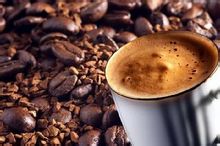
Italian coffee Caffe corretto: espresso with a cup of grappa or other spirits
Caffe marocchino: increasingly popular coffee in Milan, espresso with cocoa and whipped cream
Caffe/cappuccino decaffeinato: decaffeinated coffee or cappuccino
Caffe/cappuccino Hag:Hag is a famous decaffeinated brand in Italy.
Caffe shakerato: the best iced coffee in summer. Since the opening of the first cafe in Venice in the 17th century, coffee has become one of the undisputed protagonists in Italian culture.
According to the Italian news agency ANSA, Italians drink 600 cups of coffee per person per year, ranking sixth in the world, behind the United States, Germany, France, Spain and Britain. In addition, the output of espresso coffee machine in Italy ranks first in the world.
6 cooking method editing Italian espresso (Espresso) cooking method
The practice of Italian espresso (Espresso) originated in Italy, which means "very fast" in Italian and is characterized by the use of steam pressure to extract the coffee liquid in an instant.
A real espresso must not be excessive, it should be drunk in one sip, not a full cup.
Preparation: (preheating machine) before brewing coffee, turn on the power switch of the coffee maker and cook the wrench and coffee.
All brown cups need to be fully preheated. A machine without a preheating plate can iron the coffee cup with hot water before brewing the coffee to keep it.
The coffee is delicious and long-lasting.
Grinding: choose the coffee powder with the right crushing degree, the coffee powder that is too coarse will make the water pass through too quickly, and the extraction is not enough.
The coffee is thin and light. Too fine ground coffee powder will make the water pass through too slowly, soak too much, and the coffee tastes too bitter.
Coffee making method: put 7 grams of coffee powder (the standard amount of powder for a cup of coffee) into the boiling wrench in the grinder
Press the handle with a moderate force to ensure that the right amount of coffee liquid is extracted in order to let the water pass evenly through the coffee powder.
Screw the wrench to the coffee machine and press the cooking button. It starts with the press of the button and ends in 22-28 seconds. The amount in the cup at this time
It should be 1.5 ounces.
The secret of brewing coffee: the most common mistake in making espresso is to use too much water. In fact, a cup of the strongest espresso costs only 0.3 to 0.5 ounces, no more. When the coffee foam CREMA flows out, pay attention to its color, it should be a darker golden yellow at the beginning, the color becomes white means that it is too leached and should be boiled before whitening.
Italian espresso (Cappuccino) making and brewing A real espresso is made of 1/3 coffee (an espresso), 1/3 hot milk and three portions
One of the milk foams (the liquid in the cup is half espresso and half hot milk).
Milk foaming Note: be sure to use cold milk, hot milk is difficult to foaming. Pour milk into a clean stainless steel cup, do not use
Other containers, because metal is a good conductor of heat, it is easy to transfer the temperature of milk to the hand in the process of milk foaming, so that it can be timely.
Control the temperature of the milk to prevent it from getting too hot or burnt, to avoid scalding guests and making bad-tasting coffee.
one。 Pour in the milk (not more than 1/3 of the container volume)
two。 Turn on the steam switch, release the water between the steam valve and the steam pipe mouth, put the steam pipe mouth on the surface of the milk and open the steam
Valve, when the steam valve opens a certain limit, the operator should hold the cup handle with one hand and the cup wall up and down with the other.
Move the milk cup and let the steam enter the milk to be foamed (the hand holding the wall of the cup will feel the temperature of the milk)
three。 If the temperature of the milk is already very hot, it should be stopped immediately to avoid boiling the milk. No matter whether the foam is good or not, it is stopping.
When stopping, you must first close the steam valve, and then let the steam pipe leave the milk surface to avoid scalding.
four。 After foaming, put the milk cup next to it to separate the milk from the milk foam.
five。 An espresso. Put 7-9 grams of coffee powder into the cooking wrench and press it with medium force on the handle of the grinder.
Once, screw the wrench to the coffee machine and press the cooking button. The amount in the cup should be calculated for 28 seconds from the time the button is pressed.
It's 1.5 ounces)
six。 Then add milk to the prepared coffee cup. Note: cover the milk foam with a spoon, pour the milk into the cup, and put the milk foam with a spoon
Scoop on top of the liquid. Sprinkle a little cinnamon or chocolate powder on the milk foam as a final embellishment. But in Italian tradition,
There is no habit of adding other seasonings, add or not to our shop or guests to choose.
Italian layered Milk Coffee (Latte) preparation and Cooking method
Heat: first pour an espresso (please refer to the making of espresso) into a preheated cup, then pour the hot milk into the cup; the amount of milk must be greater than 1 pound of the cup capacity; finally, scoop the foam on the liquid; add a little chocolate powder, or cinnamon powder (traditional).
Delamination: pour the hot milk into a glass, the amount of milk is greater than the glass capacity of 1max 2, gently pour an espresso into the glass, and it will be layered.
One of the more important is: milk can not be too hot, too hot milk will not hold coffee; secondly, coffee must be standard, if the amount of coffee is too much, it will not be layered.
Fill a transparent glass with ice, pour cold milk larger than 1x2 into the glass, gently pour into an espresso, top with foam and garnish with a little chocolate powder. (use straws, thin sugar)
The characteristic of Latte is that the taste of milk is heavier than that of coffee, so it must be greater than 1 stroke 2 milk.
Espresso
"Espresso" is an Italian coffee word that means "onthespurofthemoment" and "foryou". Perhaps the translation of "espresso" is not appropriate, so in a later unit, Espresso will be directly referenced and the translated name will no longer be used.
If you ask what Espresso is, you will get many different answers. Indeed, after 100 years of development, Espresso has become a kind of life and art.
Espresso is a method of brewing coffee.
Espresso is a technological method of brewing coffee. According to the definition of "EspressoCoffeeTheChemistryofQuality", it must meet the following conditions: the amount of coffee powder (cup) 6.5g ±1.58g.
Temperature of water (℃) 90 °±5 °
Water pressure 9 ±2 Atmospheric pressure (bar)
Filtration time 30 ±5 seconds
Water temperature: if the water temperature is too low, it will cause insufficient extraction, and the substances inside the coffee can not be fully released, so you can only cook a cup of Espresso; with insufficient flavor and sour taste. Once the water temperature is too high, excessive extraction will make the coffee bitter and astringent.
Water pressure: the general hot water brewing method can only extract water-soluble substances inside the coffee, while Espresso can further extract water-insoluble substances by high pressure. These high pressures will completely emulsify the lipids (LipophilicSubstances) inside the coffee and dissolve into the water, which is the main source of "mellow taste" (body).
[P.S.] emulsification will make Espresso taste thicker, making people drink with a "velvety" feeling; and stickiness will form a lower surface tension, more able to invade the taste buds, so that mellow reverberate in the mouth for a long time.
Filtration time: the length of filtration time will affect the amount of water output. Espresso uses high-pressure hot water to extract the flavor of coffee, which takes about 25 seconds to complete the task (after this time, the liquid is no longer tasty and will only dilute Espresso). After the timeout, some people continue to let it out of the water and fill a cup to form a "Americano" or "Lungo", which tastes like charcoal-roasted coffee.
Espresso is a kind of life
In Italy, Espresso is simply a local life concerto. In the morning, drink a cup of latte (Latte); then, people like to go to the store to drink Espresso, everyone waits in front of the bar, after getting the first-hand coffee, three sips to drink. The guests in the shop knew each other and talked to each other, and even the coffee maker (Barista) took part in the chat, so the cafe became a social place.
In the United States and Taiwan, Italian-style cafes are littered with places for young people to date and chat. Most of them don't drink Espresso, only cappuccino or latte with milk. Most of these young people don't know the delicacy of Espresso. They just come here to see the atmosphere of Espresso. Presumably, this is also a kind of Espresso life!
Espresso is a kind of mixed coffee
Espresso is an art of integrated coffee that allows people to spend their whole lives studying its recipes. Because of the role of high-pressure hot water, it is easy to highlight the characteristics of a single coffee bean, resulting in taste imbalance of Espresso. Therefore, coffee companies are serious about developing their own recipes, even proud of it.
Sun-cured coffee beans are mellow, while water-washed beans are sweeter; 1-2-year-old new beans have lively acidity and taste, while old beans are calm and thick. As for the recipe, it is as difficult as writing a music concerto, which only depends on the old master's long-term experience and self-experiment. no wonder the coffee maker enjoys a high status in Italy.
Espresso is a baking method.
Espresso is a baking method, and you can buy a bag of "Espresso" in the store, which refers to heavy-roasted coffee beans suitable for brewing into espresso. The importance of lipids has been discussed in the previous section. Emulsified lipids are the main source of alcoholic flavor, so Espresso often uses deeper baking to drive lipids to the outlet of the cell pores without spilling large amounts of coffee beans; by this time the baking temperature has exceeded 200 degrees Celsius, which may destroy the whole pot of beans in a few seconds. Therefore, the mastery of baking degree is undoubtedly an art.
Espresso is a kind of cooking.
Due to the strong flavor of Espresso, adding milk or other drinks will not be diluted, so a variety of additives can be made into a variety of coffee, has become a kind of cuisine. For example:
Add Espresso to milk to make cappuccino (Capuccino) or latte (caffeLatte).
Add chocolate sauce and it becomes caffeMocha.
If only milk foam is added, it is EspressoMacchiato.
In addition, fresh cream can be added to make Herbalife coffee (EspressoConPanna).
7 Cultural Origin Editor the coffee culture in Europe has a long history, among which Italy is the most popular. However, the coffee we are talking about here is not world-famous instant coffee such as Nestle and Maxwell. In their eyes, these "fast food" powders are not even coffee. What kind of espresso do Italians drink? The territory of Italy is long and narrow, stretching from north to south to 1300km. Just as the roasting degree of coffee beans is different, espresso is also poles apart and ever-changing.
For example, the local espresso in Naples, located in the south of Italy, is about 20ml, which is stronger than that in the north. Like to enjoy
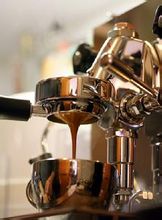
Espresso, strongly flavored and deeply roasted, is characteristic of the south. In addition, some coffee bars already add sugar when serving coffee to customers. Not only that, espresso is usually accompanied by sugar. Among them, the soluble fine sugar is the most common. As for coffee cups, coffee bars mostly use small thick cups (demitassecup) for espresso. It has good heat preservation and is very suitable for drinking espresso. However, some restaurants which are mainly dining may not use this kind of cup. Some will match the atmosphere of the whole store and use thinner ceramic cups.
Real Italian coffee not only pays attention to the choice of raw materials, grinding technology and coffee sets, but also brewing coffee has become a craft in Italy. Such a complex and delicate process has given birth to Italy's unique coffee culture and numerous types of coffee. The coffee that people often drink in Italy is distilled and has a strong flavor, similar to the espresso coffee of China's "Kungfu Tea". There is also dotted with milk foam, fragrant cappuccino. In addition, coffee with many other ingredients, such as chocolate, cream, wine and even whisky, is more common in Italy.
With such a wide variety of coffee, Italians naturally do not have too low requirements for coffee pots. If you walk into the kitchen of any Italian family, you can always see an octagonal, exquisitely made coffee pot about 30 centimeters high. This is the famous mocha pot, which makes exquisite mocha pots that can exert the aroma and romance of coffee to the extreme. At the same time, it is also an exquisite decoration. In addition to the popular coffee pot, there are also mocha pots decorated with various patterns and original designs. However, whatever the type, these mocha pots have one thing in common, that is, the coffee brewed with them is particularly fragrant.
Italians do not understand the prevalence of Starbucks in China, saying that it is coffee grounds with milk and sugar in the water! However, most people who have had espresso prefer this kind of espresso.
8 different Editor Italian Coffee is different because it is given a specific meaning in its formation. After-work Italians like to refresh themselves with coffee, but in order to save time, they need a simple and strong cup of coffee, so they have its representative drink Espresso, which means espresso.
It is understood that this Italian coffee is not only fragrant and mellow, but also simple, as long as the boiling water is forced by steam pressure to pass through the very fine and extruded coffee powder to absorb the strongest taste of the coffee, and then drop it into the following cup, which can not be extracted too quickly, so the coffee machine must be able to close very quickly, when the coffee machine drips coffee with golden yellow color, this is Espresso. Because it is concentrated, it is generally used in small cups, and this kind of coffee is also used as the base of fancy coffee.
Espresso is tasted in small cups, preferably within three mouthfuls. When drinking, do not need to add sugar and milk, net taste of the flavor. What is a good espresso? There are three main elements to be examined:
First, the perfect Italian espresso will be covered with a rich crimson Klima (the dark brown foam on the surface of the coffee, containing the key aroma molecules of the coffee)
Good espresso will leave a rich aroma in the cup after drinking
Third, observe the extent to which Klima "hangs the cup" (left on the cup wall). Many hanging cups are good espresso. In foreign countries, if there is no hanging cup, you can refuse to pay the bill. [1]
9 Coffee brand editor
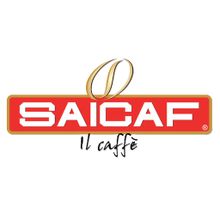
Brand and products of saicaf (8 copies)
Eighty years ago, the Saicaf coffee brand was born in the southeastern Italian port city of Bari. Since its establishment in 1932, after four generations of painstaking efforts, Saicaf has become a leading brand in Italy and one of the top 10 coffee suppliers in Italy, with 5 million kilograms of roasted coffee sold around the world every year. In September 2012, Italian Saicaf Zhenpin Coffee, which contains 80 years' taste of life, came to Asia for the first time and came to Shanghai. [2]
Saicaf's hometown is in Bali, Italy, located in the southeast of Italy, bordering on the Adriatic Sea, is the main port leading to the Balkans and the eastern Mediterranean, but also a famous cultural city with a long history. Bari has been an important maritime hub as early as ancient Roman times. Saicaf S.P.A (Co., Ltd.), founded in Bali in 1932, is the leading coffee company in Italy with a history of 80 years. Saicaf is a leader in the domestic market and commercial enterprises in Puglia, Italy. It provides coffee with a leading share in the domestic and international markets. It is one of the top ten coffee suppliers in Italy and the first Italian company to use automatic coffee machines. After the unremitting efforts of four generations of operators, 5 million kilograms of roasted coffee are sold around the world every year, including Europe, the United States, Australia, South Africa, Canada and Israel. Saicaf began to expand in Asia in September 2012, with Shanghai as the first stop.
SAICAF imports raw coffee beans directly from countries in the equatorial region, which has created a series of blended coffee to satisfy the different tastes of consumers around the world. For more than 80 years, SAICAF has been adhering to a high degree of standardization of product quality, so that consumers feel relaxed and enjoy this pleasant moment every time they taste coffee.
Sokafie (Shanghai) Restaurant Management Co., Ltd., a wholly-owned subsidiary of Italian Saicaf Asia Treasure Co., Ltd., opened Saicaf Asia's first coffee shop on Shannxi Road in Shanghai on September 28th, bringing Italian coffee exquisite and fashionable life taste to China for the first time. Saicaf Coffee Shop, located in Red House, South Shaanxi Road, Shanghai, is the flagship store of Saicaf Asia and a boutique coffee shop full of Italian taste and culture. It conveys not only the art of coffee, but also the traditional Italian life with unique sentiment.
Important Notice :
前街咖啡 FrontStreet Coffee has moved to new addredd:
FrontStreet Coffee Address: 315,Donghua East Road,GuangZhou
Tel:020 38364473
- Prev

High-quality Mexican coffee beans from Guatemala
Due to geographical and climatic reasons, the coffee growing area of Mexico is close to Guatemala, and the production classification belongs to the Central American type. The main producing areas of the editor are: Kolabegu and O'Aluca states, most of the products are washed beans produced in the highlands, with good aroma and sour taste, the grade is divided into three categories according to altitude: Aldura (219m-1280 m), Prima. Rabe Society (
- Next

How much do you know about French coffee?
When it comes to Bordeaux in France, people may think more of the world-famous Bordeaux wine. But in fact, the commodity coffee in world trade has been closely related to the city of Bordeaux for many years. The first coffee shop in Europe appeared in the mid-17th century. With the development of coffee trade, the two French ports Le Alpha and Bordeaux have gradually become imports of coffee beans.
Related
- Guji coffee producing area of Guji, Ethiopia: Humbela, Shakiso, Wulaga
- What is the most expensive variety of Qiloso in BOP multi-variety group?
- How to store the coffee beans bought home?
- Why are Yemeni coffee beans so rare now?
- Ethiopian Sidamo all Red Fruit Sun Sun Santa Vini Coffee beans
- SOE is mostly sour? What does it mean? Is it a single bean? what's the difference between it and Italian blending?
- Is Italian coffee beans suitable for making hand-brewed coffee?
- How to choose coffee beans when making cold coffee? What kind of coffee beans are suitable for making cold coffee?
- Just entered the pit to make coffee, what kind of coffee beans should be chosen?
- Can only Japan buy real Blue Mountain Coffee? What are authentic Jamaican Blue Mountain coffee beans?

